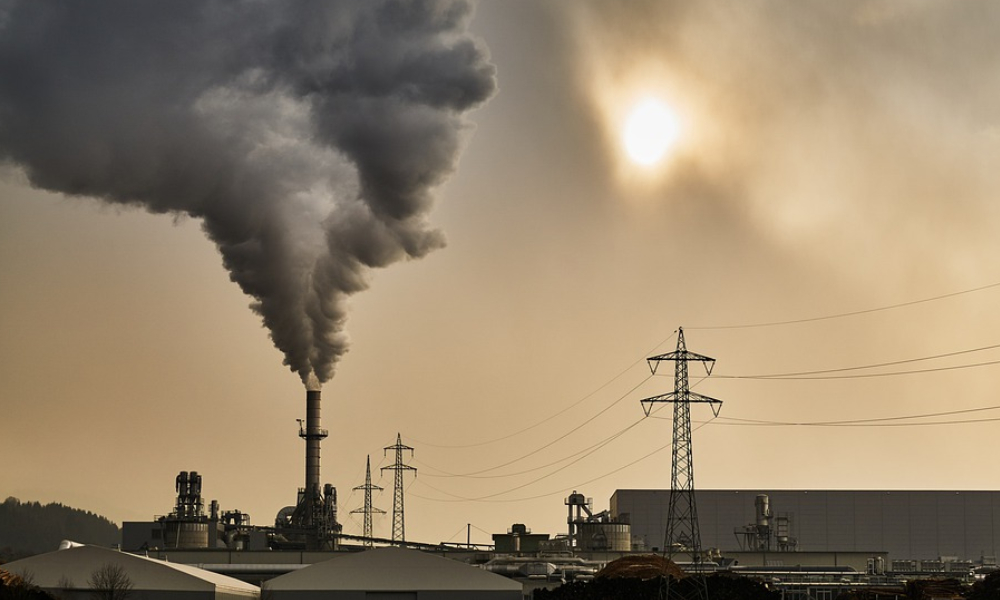
Image Credits: Pixabay (representational)
How Surat's Emissions Trading Scheme Aims To Reduce Air Pollution
Writer: Chahat Suri
Chahat is a diligent, lively and a competitive student who is on her way to explore the world. An individual with a creative outlook, offering unconventional ideas, who wants to broaden her horizons in broadcast media and content writing.
Gujarat, 28 July 2021 9:59 AM GMT
Editor : Ankita Singh |
A literature lover who likes delving deeper into a wide range of societal issues and expresses her opinions about the same. Keeps looking for best-read recommendations while enjoying her coffee and tea.
Creatives : Ankita Singh
A literature lover who likes delving deeper into a wide range of societal issues and expresses her opinions about the same. Keeps looking for best-read recommendations while enjoying her coffee and tea.
Under emissions trading systems, companies are paid to install pollution-reducing technology. Surat's pilot scheme enabled participating industrial units to reduce particulate emissions by 24%, according to an analysis.
Last week, China, the world's top greenhouse gas emitter, announced opening a national carbon market, a type of emissions trading system. Under this system, industrial units that cannot meet annual government-set greenhouse gas emissions targets will have to purchase surplus targets from units that met theirs.
A pilot emissions trading scheme (ETS) for particulate matter pollution was executed in Surat, Gujarat, in September 2019, the world's first programme that works similarly. Industries that participated in the pilot scheme reduced their particulate matter pollution by almost 24% compared to the industries that continued to be under the usual business regulations of complying with ambient air quality standards. Analysis of the scheme's effectiveness had been projected initially.
What is Particulate matter?
Particulate matter (PM) is a term for a mixture of fine solid particles and liquid droplets suspended in the air, like soot, dust, smoke and dirt. It majorly contributes to air pollution in and around the industrial clusters. These are microscopic particles that, when inhaled, can cause lung and cardiovascular diseases after entering the bloodstream. In 2017, air pollution was the reason behind one in every eight deaths, and a total of 1.24 million deaths in India were reported in December 2018, according to the sources.
Last month, Gujarat Chief Minister Vijay Rupani announced that the pilot scheme would also be replicated in Ahmedabad. Following this, the Punjab government also signed a pact on June 7 to introduce a similar system in Ludhiana. Surat and Ludhiana are home to some of India's biggest industrial clusters.
Working of Emission Trading System
Under Surat's ETS, the designated government authority limits the industries causing pollution to an extent by capping the emissions. Surat began the pilot scheme's third phase on November 16, 2019. The cap on the total mass of suspended particulate matter emissions is set at 276 tons per industrial unit. The cap is based on an analysis of data about emissions from the government's continuous emissions monitoring system (CEMS).
Participating industries can comply with the system either by installing technology that cuts pollution or purchasing 'emission permits' to discharge more than their limit for a certain pollutant. This is the trade part of the system. Industries that have installed emissions-reducing technology and have extra permits left can sell these to the industries that find it costlier to install such kind of technology. This way, industries can make this a source of income by installing emissions-reducing technology.
The government authority in charge, the Gujarat Pollution Control Board (GPCB), in the case of Surat, fixes the number of such tradable emission permits, which are created at the beginning of each period of compliance or trading. For the trading period from November - December in 2019, the GPCB distributed 80% (220.8 tons worth of emissions) of permits free to the industries that participated during the beginning of trading. The pro-rata allocations were based on the boiler and heater capacity of an industrial unit. GPCB auctioned the remaining 20% of emission permits through the National Commodities and Derivatives Exchange Limited e-market.
At the end of a specified trading period, the total emissions by a factory are compared to the emission permits they hold, and they are to be in compliance with the permit holdings that must be equal to or greater than actual emissions.
Ahmedabad, following in the steps of Surat, has placed orders for purchasing pollution monitoring equipment. The Punjab government is currently determining who should bear the cost of monitoring equipment, i.e. whether it should be paid by the industry likewise in Gujarat or should the cost be shared between the industry and the government.
How has the scheme helped in reducing pollution?
Although a full-scale analysis of the pilot initiative still hasn't been published in Surat, there are only a few early indications of a reduction. Out of 317 industrial units in Surat that are being analysed, 162 units participated in the emissions market.
According to the survey, it was found that plants that were randomly assigned to participate in the market reduce pollution emissions by 24% in comparison to control plants that are under usual air quality control regulations.
Also Read : Odisha: More Than 10,000 Unregistered Street Vendors In Cuttack Deprived Of COVID-19 Assistance
 All section
All section













